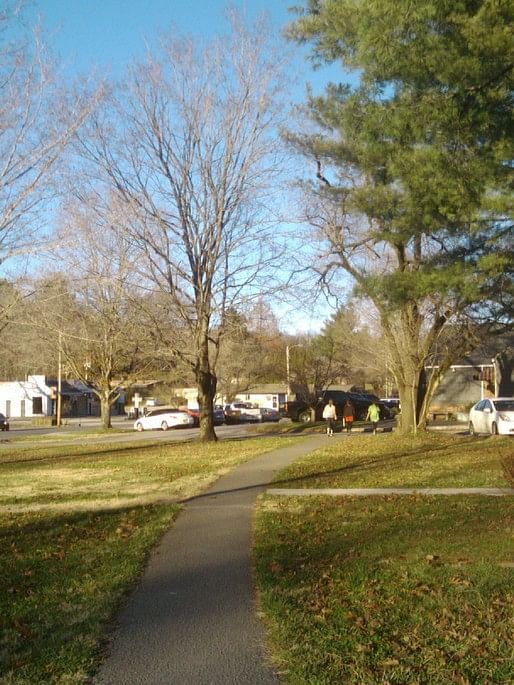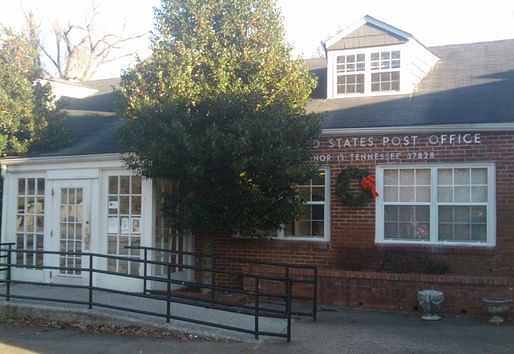
Pedestrian-friendly. Clustering of commercial areas. Front porches. Smaller yards. Urban-growth boundaries. Many who are in city planning today envision these characteristics as part of an ideal community. Back in 1933, those ideal characteristics were built into the town of Norris. Originally established as a place to house the Tennessee Valley Authority (TVA) workers who were building the Norris Dam, Norris today looks much the same as it did 75 years ago. the path continues under the bridge
the path continues under the bridge
The TVA city designers borrowed ideas for the design of Norris from the English garden city movement of the 1890s. These plans included winding roads that followed the contours of the terrain, greenbelt design principles, a central business area, houses with doors that opened to a central area, and walking paths. (It was a given that the homes built in the town would be fully electric, powered by the new energy source created by the TVA.)
the path to the town center
The completely walkable aspect of the Norris city design has remained. Walking paths are much like sidewalks, and run parallel to the roads. But they also weave through clusters of houses and underneath bridges. Every so often we’ll take a different route when out on a walk and will inevitably discover a new path to explore.
a path between homes
In the warmer months, we’ve walked to Archer’s, the local grocery store, and to the post office, located in the building next to Archer’s and Hensley Happenings, the local cafe.

the local grocery store--part of the town center
We see many people walking—on our road and throughout the community, either with their dogs, on errands, or out for some fresh air and exercise. Since it is a small town (population around 1,500), the destinations are limited, but it’s great to have the opportunity to walk to the center of town, enjoying the sights of history and nature along the way.
the post office--also part of the town center
Learn more about our project at www.thenewnorrishouse.com.
The New Norris House is a design/build effort from the University of Tennessee's College of Architecture and Design. Began in 2009, the home was designed and built by UT students in collaboration with Clayton Homes. The built project is now complete and the final phase of the project has begun. A team of 4 people (2 living in the home, and 2 graduate researchers) will rigorously document the experience via qualitative assessments and quantitative measurements, posting results to this blog.





No Comments
Block this user
Are you sure you want to block this user and hide all related comments throughout the site?
Archinect
This is your first comment on Archinect. Your comment will be visible once approved.